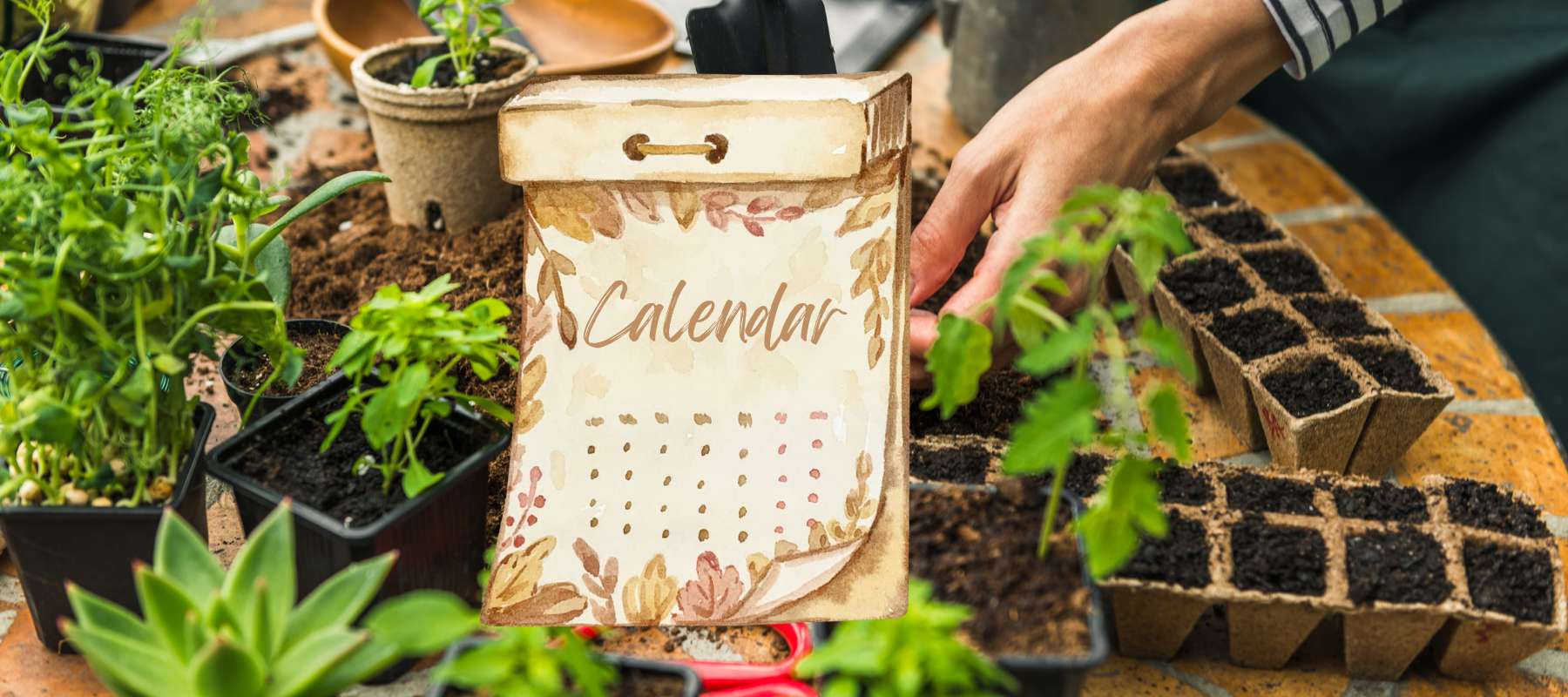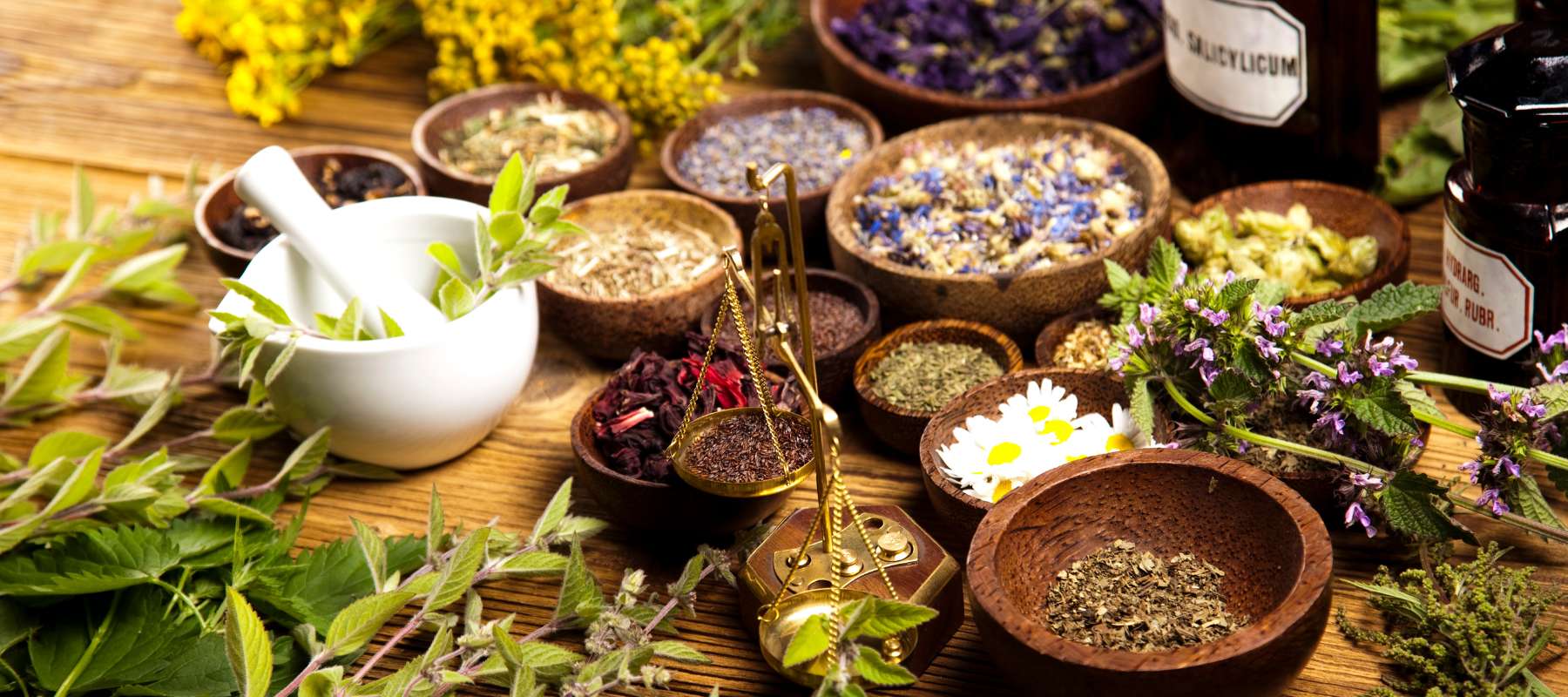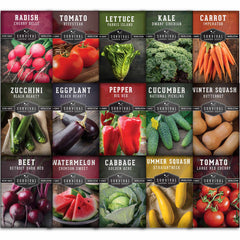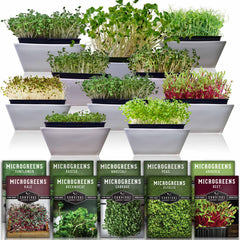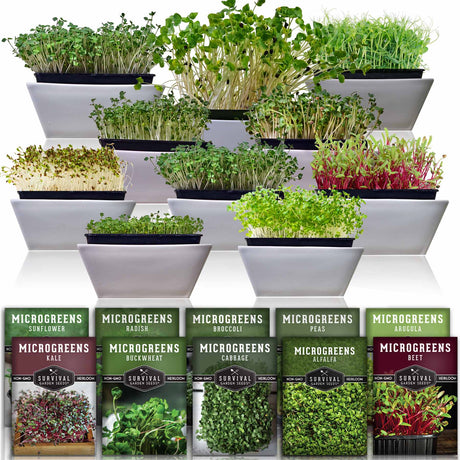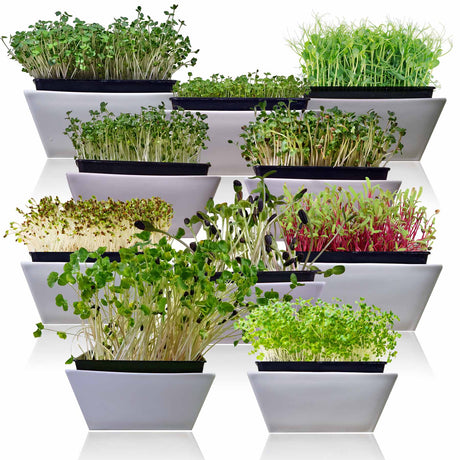As the weather turns cooler, our daily servings of vegetables turn from tomatoes, cucumbers, and zucchini to broccoli, brussels sprouts, and cauliflower. We turn to these cool-weather brassicas because they thrive this time of year and are packed with nutrients that keep us healthy through winter. Cauliflower has become increasingly popular due to its high fiber content, nutritional profile, and unique texture, allowing it to work as a substitute for other foods that may be higher in calories or cause problems for people with food allergies.
Let’s look at the health benefits of cauliflower and learn how to grow and cook this delicious and nutritious vegetable.
Health Benefits of Cauliflower
Cauliflower is packed with nutrients including vitamins C, K, and folate as well as minerals such as potassium, manganese, and phosphorus. In addition, it is high in fiber. One cup of cauliflower contains 2 grams of fiber which is 7% of your daily needs. Cauliflower is high in antioxidants that can help with heart health and reduce inflammation.
Cauliflower can help with weight loss. Because it is high in fiber, high water content, but very low in calories, consuming cauliflower as a substitute for higher-calorie foods like potatoes or rice can help you lose weight. It has gained popularity because of its versatility. Cauliflower can be used to replace rice, mashed potatoes, tortillas, and even pizza crust. It can be roasted, steamed, fried, or eaten raw making it simple to add to your diet.
How to Grow Cauliflower

There are many different varieties of cauliflower from the standard white to green, and even purple. Most varieties prefer cooler weather. Some can be sown in the spring, but most people grow cauliflower as a fall crop. There are a few things to keep in mind if you want to grow cauliflower successfully.
- Cauliflower demands plenty of water. Direct sow seeds about 8 weeks before your first frost in rich, well-drained, moisture-retaining soil. The soil should have a pH of 6 to 7. Keep well-watered, but not wet. Water-stressed plants will not produce heads, so try to keep watering to one to two inches of water per week. Several inches of mulch around the plants will help the soil retain moisture.
- Plants need lots of nutrients to form heads. Seedlings should be thinned to 18 inches apart. Cauliflower is a heavy feeder, so fertilize with a nitrogen-rich, organic fertilizer like fish emulsion regularly (follow the instructions on your fertilizer). Practice good crop rotation and do not plant cauliflower in the same area where other brassicas like cabbage, broccoli, brussels sprouts, or cauliflower were planted the year before.
- Like many brassicas, it can be a target for pests like cabbage worms, cabbage loopers, moth larvae, and others. The best protection for your plants is to keep them covered with a row cover as soon as you plant them. This will prevent insects from laying eggs from the start. This will also prevent the cauliflower from being scorched by the sun.
Harvesting Cauliflower

Some varieties of cauliflower may require some intervention as they get close to being ripe to help the heads keep their lovely white color. You can pull some of the larger leaves up over the ripening head and tie them with a rubber band or string to keep the head shaded so it remains white. Our Snowball Cauliflower has tight leaves that help to shade the head so your intervention shouldn’t be necessary. Colored varieties of cauliflower like Green Macerata and Di Sicilia Violetto do not need to be wrapped.
Harvest cauliflower heads when they are 6 to 8 inches around. You want to harvest before the buds start to open while the head is nice and tight. As the head matures the branches will start to loosen and the taste will not be as good. Cut at the base of the head to remove it from the plant. It will keep well in the fridge in an unsealed bag for up to two weeks. It also freezes well but should be blanched first. For long-term storage, cauliflower makes a good pickle.
Cauliflower has a reputation for being a bit fussy to grow, but if you understand that it needs plenty of water and food, and provide it with some protection from pests and the elements, you can add this versatile and nutritious vegetable to your fall garden.
Cauliflower Pizza Crust
Something that has become very popular here in New York is cauliflower pizza crust. Even many of the local pizza shops offer it as an option. It is a gluten-free, keto-friendly, low-calorie way to make one of our favorite treats healthier.
Ingredients:
- 1 6”-7” head of fresh cauliflower (or 2 16oz. Packages of cauliflower rice)
- 1 egg
- 1 cup of grated parmesan cheese
- Salt
- Pepper
- Your favorite Italian seasoning (garlic, oregano, basil, etc.)
Instructions:
- Prepare the cauliflower - If using a fresh head of cauliflower, peel off the outer leaves and cut the head into florets. Pulse florets in a food processor until they have the consistency of rice. Alternatively, you can grate them on a cheese grater.
- Cook the cauliflower - spread your cauliflower rice onto a baking sheet and roast in the oven at 375°F for 15 minutes or microwave in a microwave-safe baking sheet on high for 8 minutes.
- Cool and drain the cauliflower - line a bowl with cheesecloth or a linen towel and add cooked cauliflower to let it cool until it is safe to touch. Then squeeze the cooked cauliflower to remove as much liquid as possible. You may need to unwrap the cloth and stir the cauliflower and then squeeze again. You should end up with a cauliflower mash that is very dry and more than a cup of liquid.
- Make the pizza crust - combine cauliflower, egg, parmesan cheese and seasonings to your liking and mix well.
- Bake the crust - line a baking sheet or pizza pan with parchment paper and spray well with cooking spray. Spread crust mixture evenly over the pan, making sure the edges are the same height as the rest of the crust. Bake at 375°F for 15 minutes or until crust is crispy and golden.
- Add your toppings - Complete your pizza by adding your favorite toppings including sauce and cheese and return to the oven to bake for another 10 minutes or until cheese is melted.
Helpful tips:
- One head of cauliflower should give you a crust that is about 10 or 11 inches in diameter. Don’t make it too thick or it will be soggy. Try not to make edges too thin or they will burn before the rest is cooked.
- Don’t overload with toppings. This makes a thin, crispy crust that you will not be able to hold if too overloaded with toppings.
- Have patience. Allow your cauliflower pizza to cool for a while before slicing so it stays crispy.
- To make this recipe completely vegan and keto-friendly, replace the cheese with almond flour and the egg with ground flax seed.


